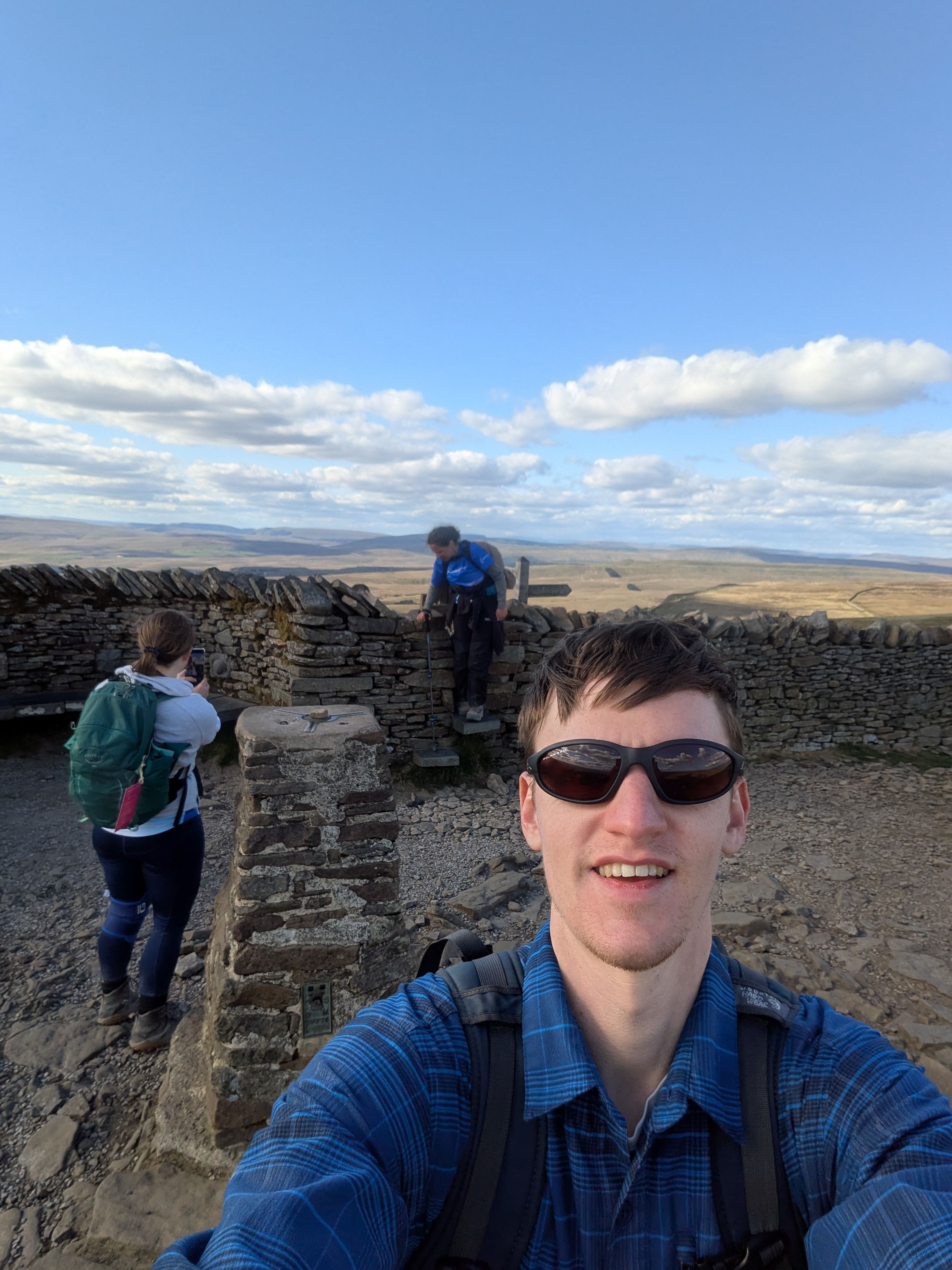Last updated: Aug 31
I’ve been meaning to write a blog post about my experience hiking the Yorkshire Three Peaks. I did it! On May 3rd, I hiked 24 miles with about 5,300 feet of elevation gain, clocking in an ok pace of 11 hours. The group I was with was able to raise over £11,000 with this event for Breakthrough T1D research!
Hiking with Type 1 Diabetes (T1D) is often not an easy task so this was physically the hardest thing I’ve accomplished post-diagnosis but the accomplishment has come with surprisingly mixed emotions.
If you’re someone with T1D and are looking for some practical tips, feel free to skip down to The practical stuff.
The photos in this post are all ones that I took on the hike.
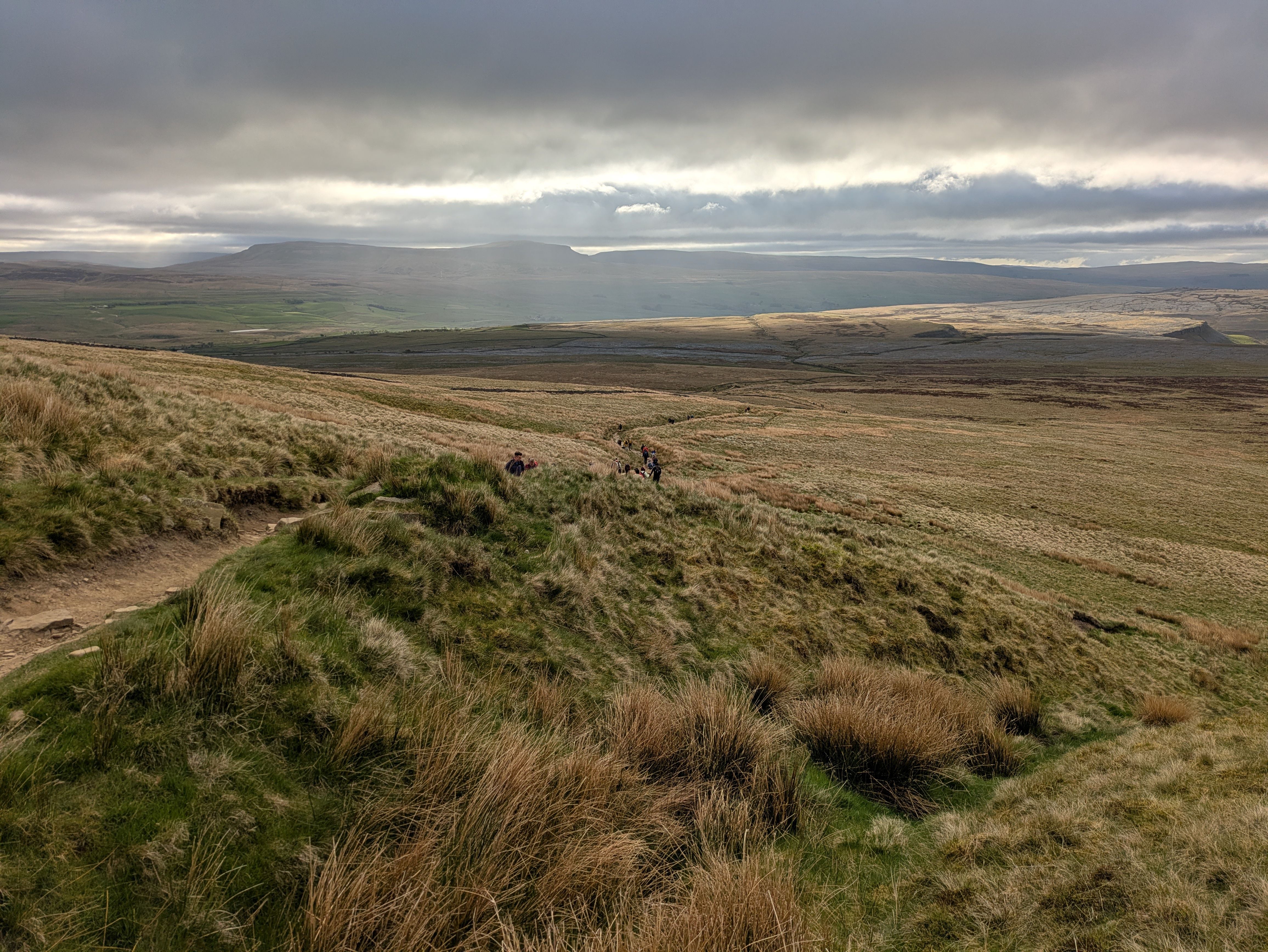
Some background
Doing “stuff” with T1D is wild. A normal human’s blood stream, digestion, and pancreas all work together (with many other systems) to perfectly provide glucose (energy) to different parts of your body, and it does so safely by not dropping blood glucose below dangerous levels. In the basic sense glucose is pushed into the blood stream as you digest carbs (glucose can also be provided from the liver, or converted from protein or fat as well), and the hormone insulin helps move that glucose into most of your body for use (the brain being an interesting exception). A person with T1D has the huge disadvantage of needing to inject insulin manually in-order to ensure that glucose gets to where it is needed. This is because our pancreas no longer creates insulin, unlike T2D which is where the pancreas produces insulin but not in adequate quantities. Once that insulin is inside your body there is nothing you can do to remove it or pause it working. Normally we inject an amount of insulin based on how many carbs we’ve eaten, but carbs aren’t the only thing that affect blood glucose. Exercise specifically can have a huge impact on Blood Glucose.
Every person with T1D will have a background (basal) and mealtime (bolus) insulin. These may be the same insulin given every few minutes by a pump or two different insulins given a few times per day as an injection. While that may not sound like a lot to keep track of, insulin is only one small piece of the puzzle. An often cited Stanford study from 2014 found that those with T1D make an average of 180 health related decisions each day. This is because of the many factors that can affect your blood glucose each day. DiaTribe argues there are 42 factors that affect blood glucose!
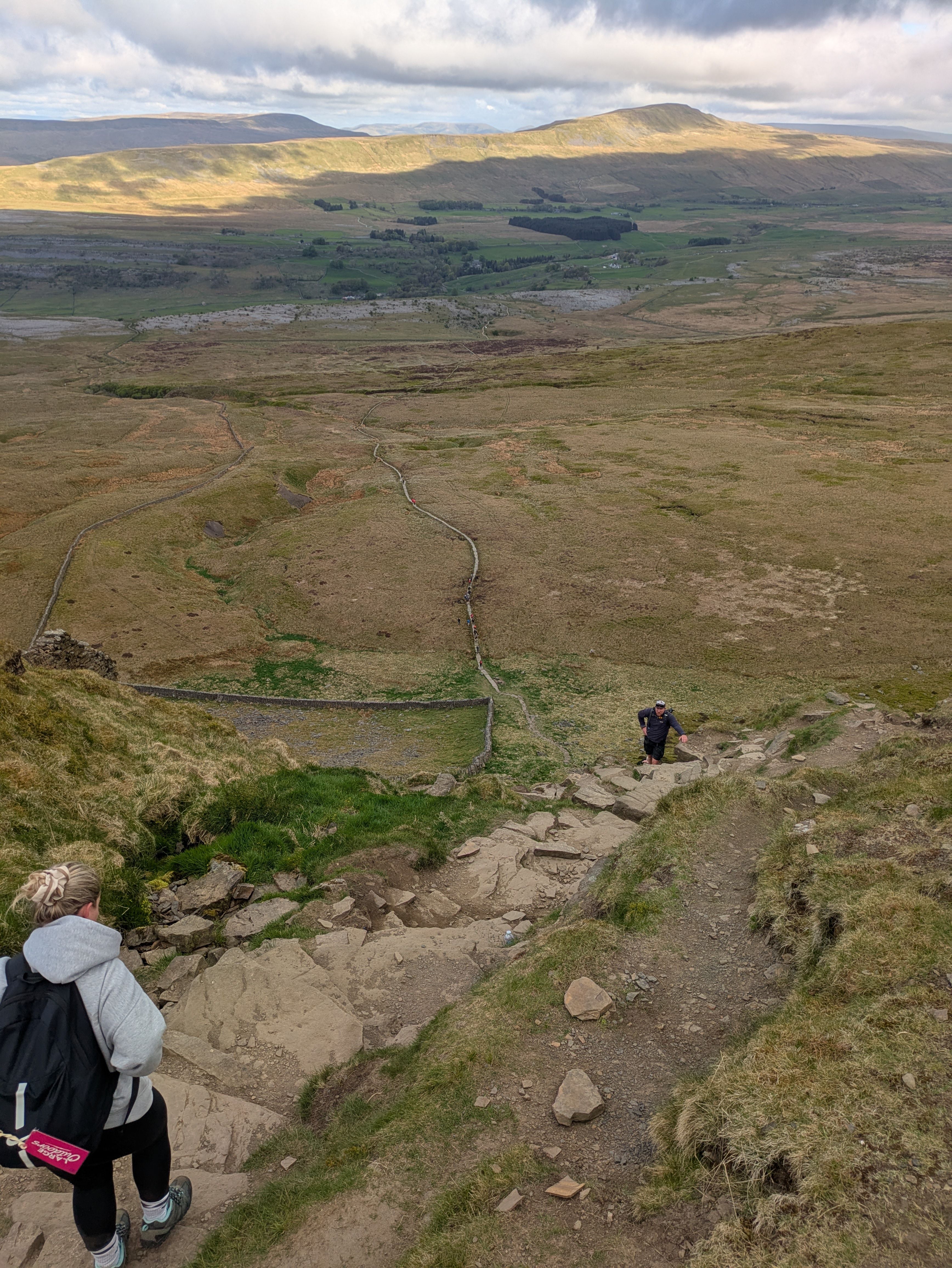
The accomplishment
For this hike I needed to determine what to eat (high carb, medium carb or low carb) and how often. These decisions were based on my current blood glucose, the last few blood glucose readings (the “trend”), how I felt, what temperature it was, what was coming up next (downhill, flat, slight incline, steep incline, break)…
Every person with T1D is different, but for me I’ve noticed that going for a short walk after a meal drops my bolus (meal time) insulin requirements by some 10-30%. A longer hike (6-8 miles) will require me to time my bolus insulin so that I have none left in my system during the hike (my bolus fast acting insulin usually stays in my body 3.5-4.5 hours) and likely snack a bit.
There is the option of lowering my basal (background) insulin, but I’ve found on longer hikes I want to eat about the same amount of carbs for energy as is required to keep my blood glucose within range anyways. If I was doing something more strenuous like jogging/running I may need to reconsider this and lower by basal for longer activities. (As a side note, very strenuous exercise like weight lifting can actually raise blood glucose as your liver starts to get involved.)
The typical route is walked counter-clockwise but we walked the loop clockwise. The loop is about 24 miles long, with 5,300 feet of elevation gain.
We started walking around 7am, and finished walking around 6:30pm.
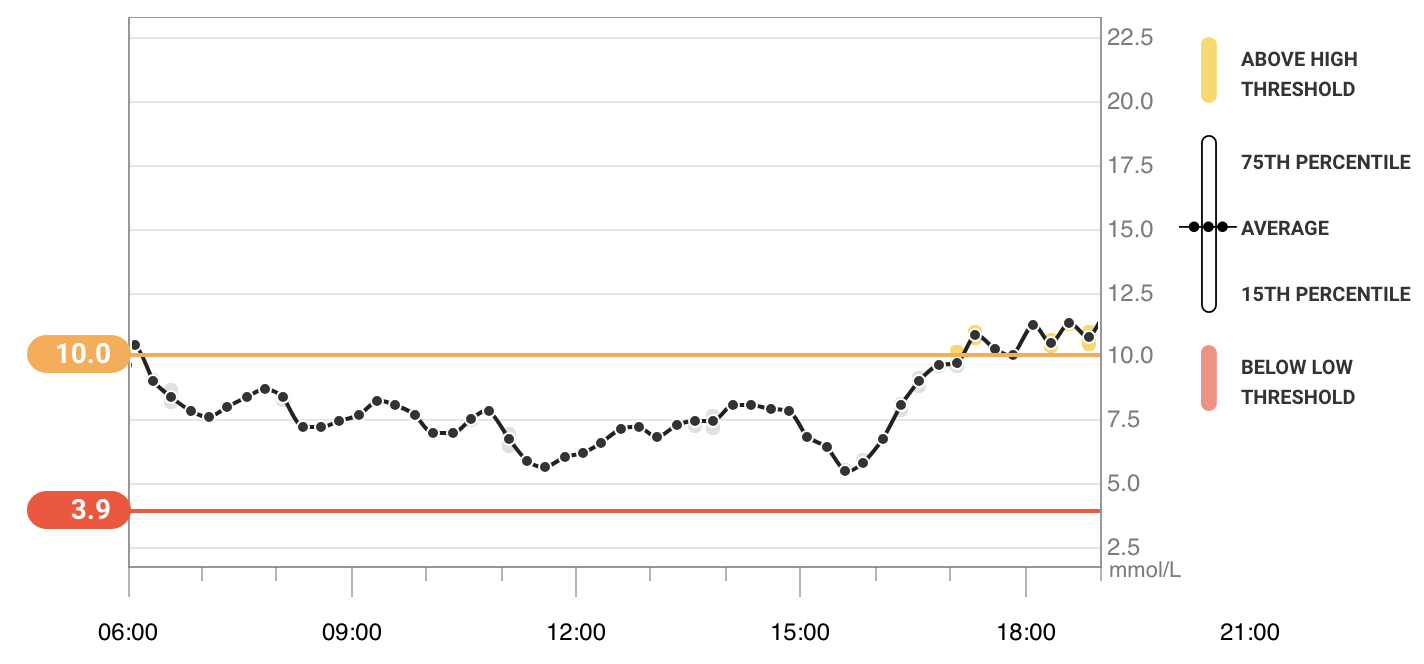
Overall you can see that my blood glucose was nearly always in-range and I was able to avoid getting too close to “low” (normally at home I’d be quite happy with a 4.5mmol/L BG but while doing activity this could quickly drop and become a problem). What’s very strange (compared to a normal day) is how little insulin I injected during this trip. I estimated that I ate around 2,000 calories worth of carbs (or 500g of carbs). Normally this would require about 28 units of bolus insulin for me. During the time I was walking I took only 1 unit.
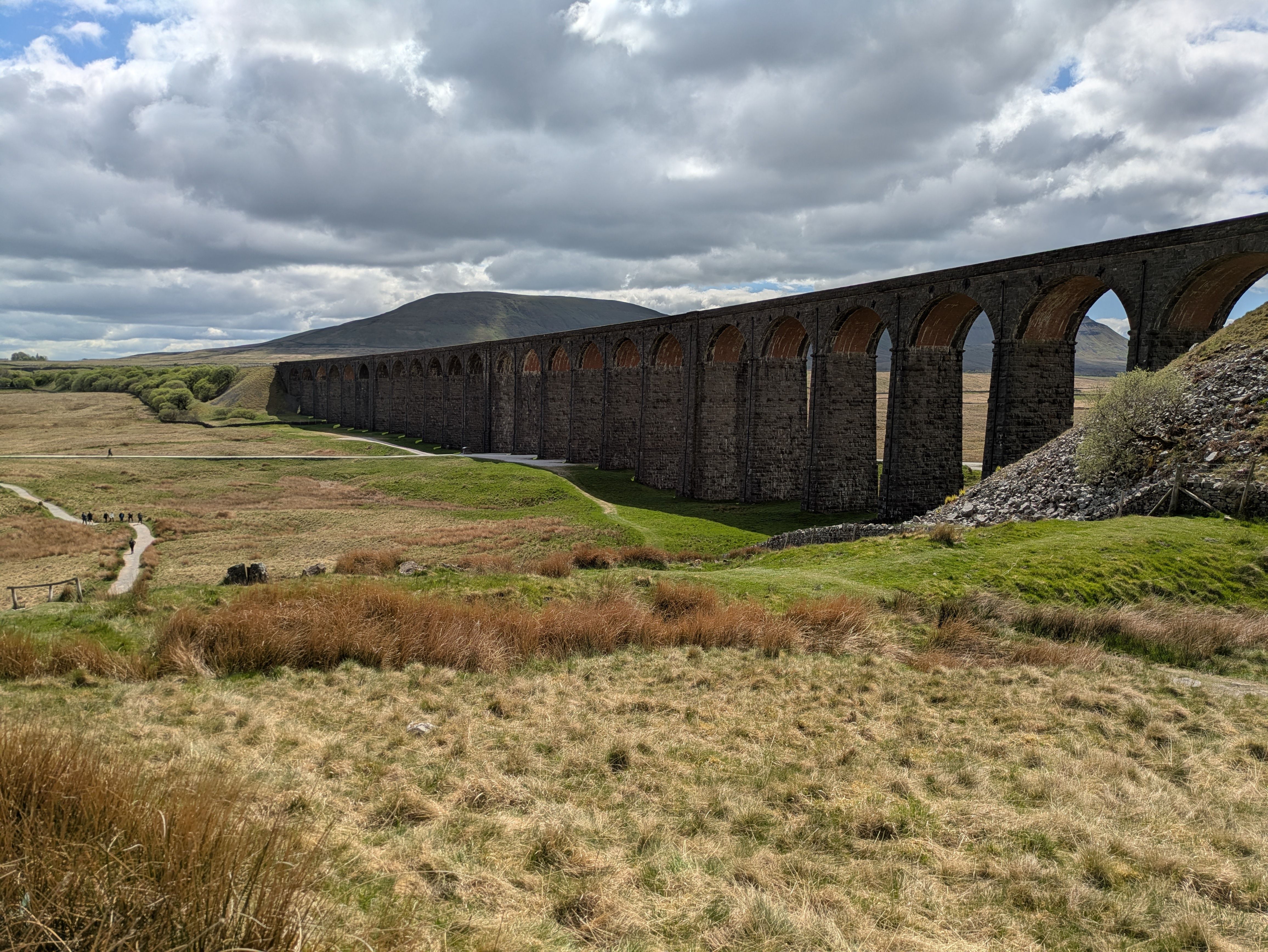
The company
The morning gathering of eager hikers was making me feel very confident and excited. That excitement quickly turned to anxiety as I realized of the 30 or so people that arrived for the event only 1 (other than me) was someone with T1D. I joined this event thinking I would make friends with other T1Ds and experience a challenge together. Being one of two quickly made me question whether what I was about to attempt was doable for someone like me.
One of the reasons why I’ve always loved hiking with groups is that you basically have nothing to do but talk. As the journey got going I found out the a majority of the group were either parents or close relatives of children with T1D. Lots of these people were intimately familiar with the details of what day-to-day life with T1D is like. Many of these folks know how hard it can be to keep your BG from tanking while exercising.
Of course its not very polite to ask a stranger with T1D how their blood glucose is doing (it is a very personal journey and health condition). Everyone along for the journey knew this and stayed polite along the route. The longer the day went on the more comments of “wow you’re doing so well” and “I’m so proud of you” I received. I can’t tell you how good it felt to have a parent who understands T1D say they’re proud of you. I was able to chat a lot with some of the T1D mums, and we had some very open and honest conversations about living with T1D and how my journey has been since diagnosis. By the time we arrived back at the parking lot one of the Mums couldn’t help themselves and was asking me how my BG was… I didn’t mind.
I do think my favorite conversation was with Grandpa Mike. When I first noticed Mike it was clear that he had a fairly severe limp. Chatting with him I learned that he was a retired man who I learned had a grand daughter with T1D. His son was in the area running a 50 mile ultra-marathon. It was clear that he came from a family of adventurers and doers. He needed a hip replacement but wanted to do this walk anyway. “I would do anything so that my grand daughter didn’t have to live with this disease.” His words nearly brought me to tears. A few miles later I convinced him that the fundraising he did was already more than enough and that he shouldn’t push himself too hard. He dropped out but his love for his family was missed.
I am very very grateful for the friends and family that donated on my behalf. I was actually quite blown away by the amount raised on my JustGiving page. That being said, seeing friends, family and acquaintances of people with T1D (but that didn’t actually have T1D themselves) walking next to me on that hike, pushing themselves physically just to raise some money for research, was an often emotional thing to behold. I was more than once overwhelmed by a sense that people truly cared. That they would do a lot, sometimes anything, so that the people they knew with T1D wouldn’t have to live with this horrible disease.
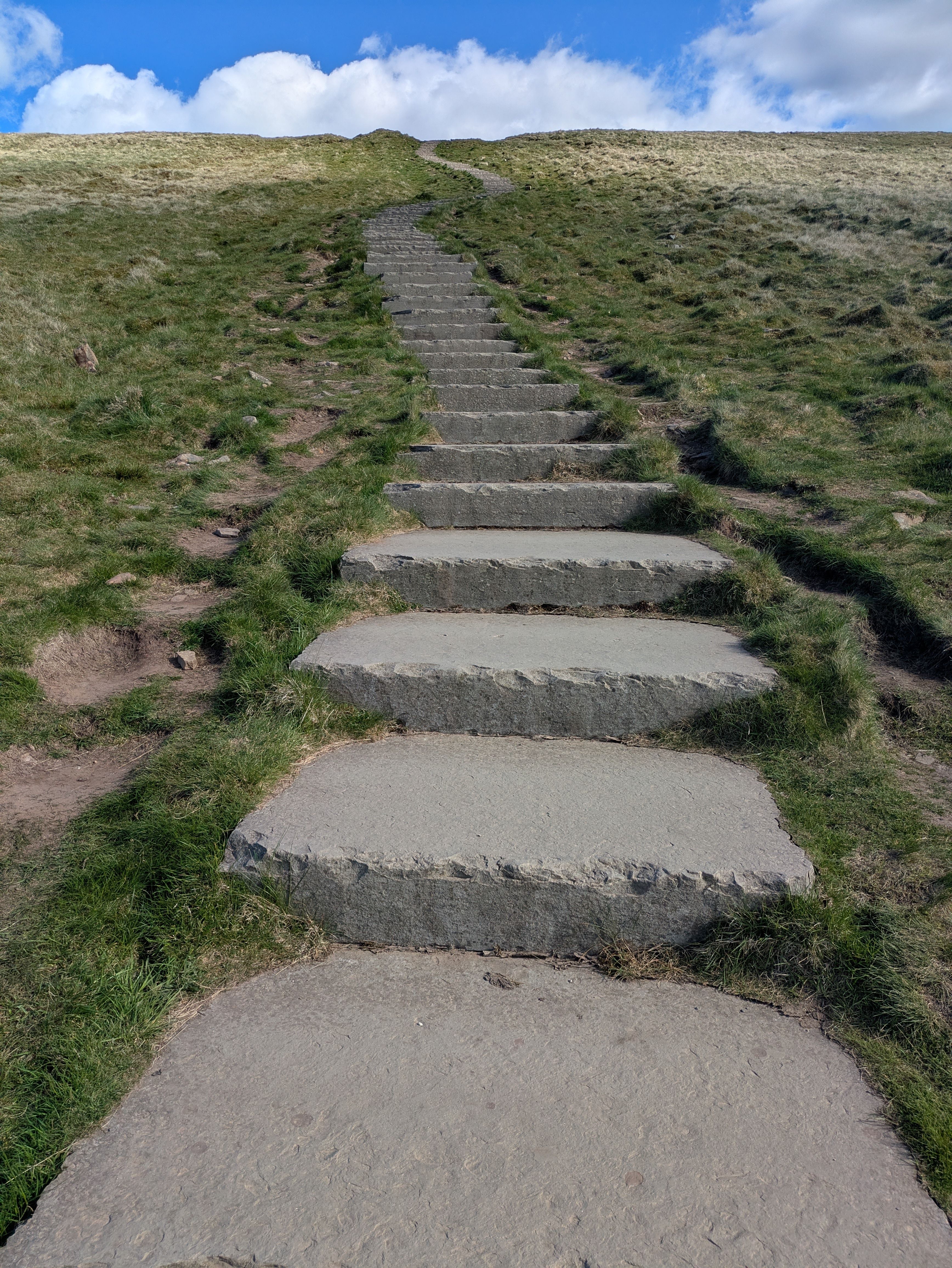
Why the long face?
I did feel accomplished on the day. I went from an anxious mess in the morning to cheering on my hiking buddies by the end. I am very grateful that I was able to take on this challenge surrounded by folks that understand the complexities of T1D. However, since this hike I’ve had some rather mixed feelings about the whole thing.
Prior to diagnosis hiking was one of the things that almost certainly lifted my mood. I could be having a horrible week, make a miserable drive out to a trailhead, it could be dumping down rain, but as soon as I was down the trail 5 minutes I would have a feeling of weightlessness and joy hit me. I could forget about my troubles for a bit and focus on the trees and the meadows. The sky and the dirt beneath my feet. I could meditate into a zone of enjoying my surroundings and focusing on a line on a map. A simple pleasure. The three peaks challenge was not a weightless endeavour. I must pay attention to my body, I must know what my current BG is, I must know what my past BG is, I must know how recently I ate something and how many carbs are in it and how fast acting those carbs are, and I must know what the trail ahead looks like, and I must make sure my heart rate doesn’t get too high or else my BG will tank, and I must make sure my heart rate doesn’t get too too high or my BG will go up (yes really), and I should not slow down the group, and I must not run out of snacks, and I should not stop and cry, and I should not let my blood glucose alarm go off, and I should not get too dehydrated…
So I couldn’t really enjoy it the same way that I would enjoy hiking before diagnosis. There were a few moments where I stopped checking my blood glucose on my watch and I looked around to enjoy the scenery (I did take a few pictures)… but even then, it wasn’t often and once when I forgot it all for a few minutes I checked my blood glucose and it was nose diving, and panic set in, and I ate a lot of fast acting carbs and I recovered… but it made me realize. I will never be able to just walk, or hike, or run and not think about my blood glucose…
So did I learn something from this experience? Well, I guess I did learn that I can do it. I’ve never been one that looks at a challenge and thinks “that sounds tough, lets do it” but I think I understand now. I’m not planning on giving up. I’ve been considering signing up to run a marathon recently. I hate running. I hate running long distances even more. But when thinking about challenges like this it feels like I’m telling Diabetes “you won’t win. I won’t let you”. It doesn’t sound enjoyable. I wouldn’t be doing it for fun. I would be doing it as a middle finger to Diabetes.
Even though I can hike 24 miles (I know I can because I did it) while maintaining good blood glucose. It doesn’t mean that it’s easy. My brother visited us in England a few days afterwards. We walked to the pub 0.7 miles away. I made it less than halfway, had a hypo, and had to sit on the sidewalk munching on candies… I can walk 24 miles but if I’m not 100% paying attention to what I ate, when I ate it, what insulin I’ve had, how long ago etc. etc. I can end up sitting uncomfortably next to a clump of grass 14 dogs peed on, waiting for my blood glucose to come up, because I’d rather not have a seizure, go into a coma, or die. It’s a miserable existence sometimes.
I’ve been reading a book “The Invisible Kingdom” recently. A book about chronic illness and those that suffer from conditions similar to T1D. A quote from the book has been haunting me a bit. “Everyone will get use to it [T1D] except me.” My parents, siblings, friends, wife… they’ll get used to the injections, the necessary pauses during walks, the carb counting, the “I’ll wait a bit before eating”. They’ll get used to all of the things I have to do, but I never will. Each day is different, each hour is different, each minute is different. It’s not predictable. It’s not easy. There’s not an easy fix. It takes away my time and effort and energy, every day, until I die.
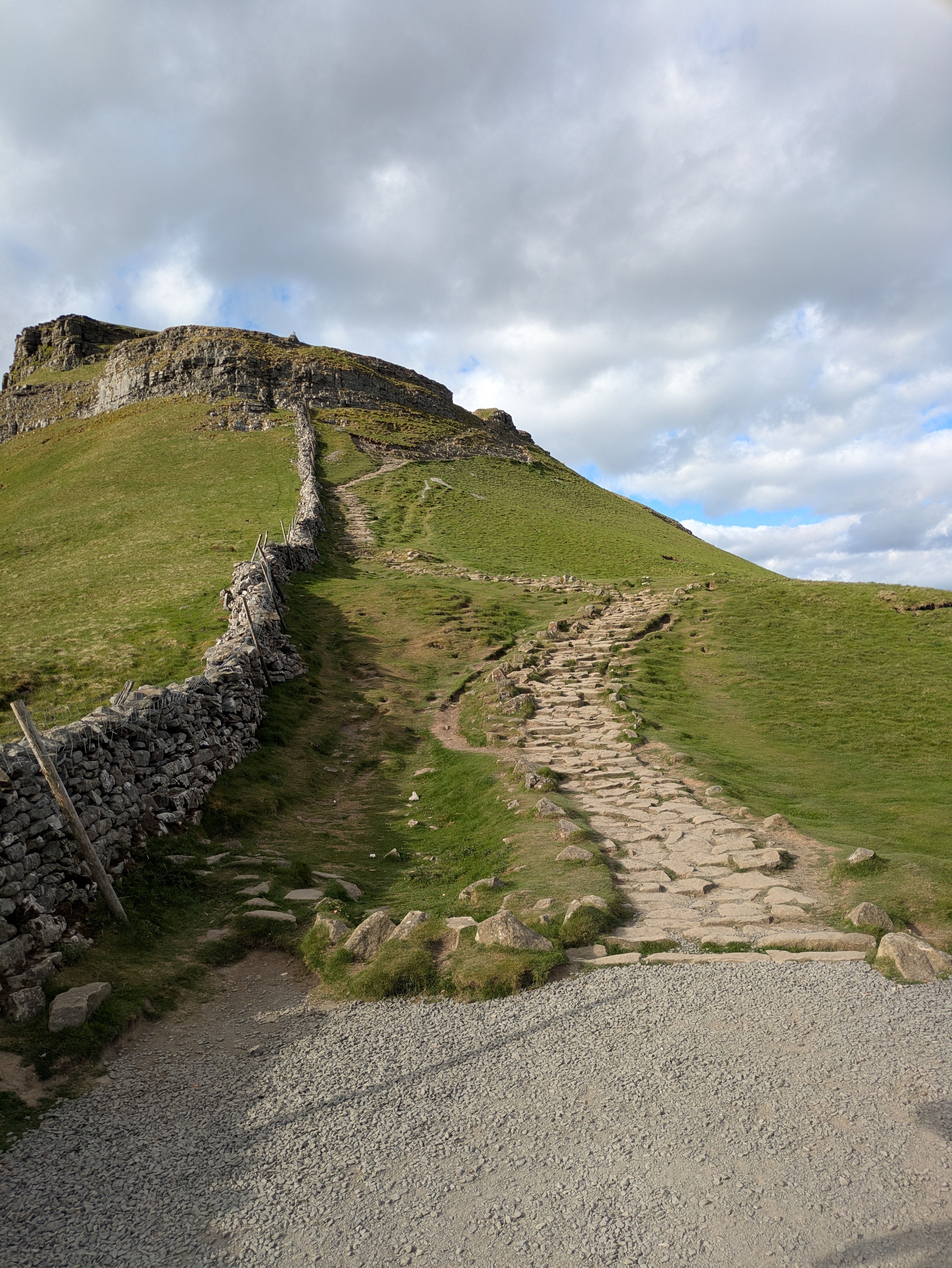
The practical stuff
So you want to do a long hike and you have T1D. Here are some things that I found worked for me. Do not take this as medical advice, always work with your Diabetes care team before making changes to your treatment plan.
Be prepared to reschedule and lower your bolus
While performing mild to moderate exercise it is likely that you will be more insulin sensitive. The easiest way to avoid dropping low due to increased insulin sensitivity is to not have any insulin in your system, that’s not always practical.
For this event I woke up at 4:45am, took 3/4ths of my usual breakfast insulin and then ate a large, decently carb heavy breakfast. This meant my BG was running high until we got to the parking lot at 5:50am and started walking around in the cold. By the time we started walking, less than half of my bolus insulin was still in my body (often referred to as “insulin on board”, IOB). I probably should have gone for a smaller bolus for breakfast or woken up earlier but ¯\_(ツ)_/¯, things seemed to turn out fine.
Set a higher target range
Normally my low alarm would be set to 4.5mmol/L, and I would aim for between 5.5-6.0mmol/L as my target blood glucose.
For this event I set my low alarm to 6.0mmol/L. I didn’t necessarily have a target range other than “don’t go too low”.
Consider reducing your basal
When planning for this event I thought of two main options for how to handle my BG. a) Lower my basal so that my BG stays stable and then bolus some for the carbs I eat or b) maintain the same basal with the understanding that I will need to eat my way out of going low.
I opted for option b) because I knew that over this long of a period time I would need to consume calories to keep my energy going. If I went with option a) I would need to know what my new carb ratio would be under exercise and I didn’t want to make a mistake and end up going low.
Do be careful with this one. I did some practice hikes before this longer hike and new that I would be needing to snack on carbs quite a bit. At one point during the hike I got really tired of eating. It took some mental fortitude to continue eating when I didn’t really feel like it.
Next time around for a hike longer than 10 miles I will probably try dropping my basal to 80% of normal with the understanding that I will have a decent calorie deficit that day.
Bring plenty of carbs
I was able to stay above 5.0mmol/L but I did get nervous at one point as I was heading down towards 5.0 even after eating a lot of fast acting carbs. I really didn’t want to end up low. Looking back I’m certain my digestion was more delayed than usual, but always better safe than sorry in these scenarios.
I brought about 3,500 calories in my pack. I’m guessing around 2,700 of that was carbs and of that I must have ate just under 2,000 calories. I thought I had brought A LOT of carbs but I was a little closer to the bottom of my snack bag than I thought by the time I was done.
Have an exit plan
Don’t do these things alone, especially if this is a new activity for you. I was very very happy to see an event like this because I knew the organizers understood T1D. The adventure guides knew the basics of T1D and were very familiar with the area. The loop itself is ideal for fundraisers like this as there are many opportunities to bail off the trail if necessary.
If you plan to do something like this with friends or family or even an adventure company, be sure that they understand the basics of T1D. You DO NOT want some yoho injecting you with insulin after you pass out from low blood glucose. Tell them about symptoms of a hypo and the best way to help you treat a hypo if a severe enough one occurs that you need help. Consider bringing glucagon with you and be sure that those with you know the difference between a glucagon kit/pen and your insulin.
Practice makes perfect
Test the system. Walking 1 mile is different than walking 6 miles is different than walking 15 miles is different than walking 24 miles BUT the closer you get to your final hiking length the closer the experience will be, and if you need to bail out early knowing what walking 6 miles is like will make bailing out at 6 miles a piece of cake.
Keep in mind that T1D is a shit show and is never the same. So what you learn one day may not be applicable to your experience another day. However, trying to go from sedentary to taking on a long hiking challenge will end in disaster, but some experience (even if its a bit different the next time around) is an invaluable resource.
